The Alfa Romeo 4C has to be one of the most under-appreciated, misunderstood sports cars in the world. It is not a GT car in any sense and that might be part of the problem. Focused in concept, design, and execution, it’s for drivers that seek purity in their driving experience; the romantic notion of man wrestling with and mastering the machine in the noble pursuit of speed. There’s no power steering, no heated sixteen-way adjustable power seats, no blind-spot monitoring or lane-keep assist programs working behind the scenes. Quite the contrary, everything about it screams “RACE CAR!” even though it isn’t. If anything, the 4C is a touchstone to Alfa Romeo’s long racing heritage meant for the enthusiastic driving public. Think of it as Alfa’s F40. All business, if you’re into that kind of thing. A car for drivers who still get a thrill out of the whole “race car for the street” concept. The only problem is…are there any of those people left out there?
Originally, I planned to take the 4C on a semi-epic journey, a multi-day road trip around the greatest of the midwest’s Great Lakes: Lake Superior. It’s a fun but long trip that I’ve done a few times in various cars and I thought the little Alfa would make the journey an unforgettable one and give me a great story full of great photography: angry autumn waves pounding the rocky shore, forested mountains shrouded in fog, enormous moose towering over the car, roads winding through birch forests and exposed granite outcrops. Life had different plans for me though. Schedules were altered, unexpected events came up, and I was confined to driving the athletic little 4C on local roads the whole week.
Not that this was bad. in my book, any time driving the 4C is time well spent. I got my first taste reviewing a 4C Spider last summer and it blew me away. It was the the most memorable, most fun car I’d ever driven and to this day it’s the most fun car I’ve ever reviewed. No, it’s not as fast as a Viper or a Corvette Z06, and it doesn’t quite hold the road like either of them do but there’s some special, intangible quality about it that neither of the two American giants had. There’s a passion to it that only Italian cars ever seem to possess, as if a single engineer feverishly worked to give form to his own personal vision and successfully brought it into existence. That passion attracts passionate drivers like a powerful magnet.
You’re probably already familiar with the details since it’s been around a few years now. Alfa Romeo contracted with Maserati to build the central monocoque out of carbon fiber. (Already you have two of the oldest, most famous and historic names in Italian car manufacturing and racing mentioned and we’ve barely started!) The carbon fiber tub is the starting point of the whole story. Who uses carbon fiber monocoques in a streetcar? Seriously. Very few companies, that’s for sure. Ferrari does on it’s more exotic once-in-a-decade-for-the-loyal-clientele/collector cars. A few other one-off specialty supercars. And that’s about it. It’s much more common in prototype race cars like you see at LeMans. This should hint at the intention of the car and impress you at the same time.
To this special monocoque, they bolt on aluminum subframes for the front suspension and the rear engine cradle and suspension. The front suspension consists of double unequal-length A-arms and coil-over suspension units. The rear utilizes (and has been criticized for, despite Porsche using to excellent effect) MacPhersen struts combined with a multi-link lower A-arm. Large drilled brake discs are attached to the hubs, along with Brembo 4-piston mono-bloc calipers. Eighteen or nineteen inch wheels wearing Pirelli PZeros complete the four corners.
Into the rear subframe goes two of the most controversial ingredients in the recipe: the turbocharged four-cylinder engine and the dual-clutch transmission. They shouldn’t be controversial in this day and age though. The small 1.75L engine is turbocharged to the hilt and makes 237 hp and 258 lb-ft of torque. Not impressed? If it seems to be a bit underpowered, you have to remember that the entire car only weighs 2,465 lbs. The Lotus Elise weighed slightly less than that and only came to market with 190 hp and 138 lf-ft. And the engine is tuned to create incredible pressurized power through the entire rev range. It will hit 60mph in a tick over 4 seconds and top out at 165, shaming many cars with much greater power. It revs so fast that the dual-clutch transmission is almost necessary to snap off shifts to keep up with the engine’s frenetic revving. It fits the racing character of the car completely though. I’ve read a lot of complaints from readers who criticize the car for it’s lack of a good old manual transmission, but believe me – as a guy who lives and dies by the manual transmission – the dual-clutch is a better choice for this engine. The revs come on so fast and strong at times that even with paddle-shifters I ocassionaly missed shifting timely and suffered the sound of the engine bouncing off the rev limiter. Embarrassing, to say the least.
The body of the car is molded sheet plastic. It’s light, inexpensive, and easy to replace. Why not? Alfa Romeo molds it into beautiful shapes that all join together to create the achingly beautiful final form that we recognize as the 4C. From the tri-lobe front grille through the swooping fenders and the sharply triangular side intakes, down the fastback rear window above the engine, to the large round taillights and twin exhausts, the 4C is a beautiful machine. The body design is as evocative of a race car as the underskin engineering is.
Pulling the door handle and opening the door wide is usually your first look at the monocoque. The doorsills and frame have that familiar carbon fiber weave. You see it right away. Then you notice that the doors are carbon fiber as well. And the floor. It’s actually the central design focus of the interior. Everywhere you look, you see the weave and you’re reminded of how special this car is. Our car had red leather seats and door skins, which looked incredible and very inviting surrounded by all the grey carbon fiber. Climbing inside requires some practice if you don’t want to look ridiculous. The sill is wide and the seats are set lower than the sill, so you have to kind of fall into it. I found I could simply step in with my right foot, lower myself into the seat, then semi-awkwardly swing my left leg over the sill and under the flat-bottomed (mercifully!) steering wheel. The door shuts with a echoey thunk and then it’s quiet. It’s a different quiet from say, a Lexus or a BMW. This is an isolated but stark, echoey quiet. Any noise you make in the car reflects back to you. It’s all the bare carbon fiber and lack of leather coverings reflecting the sound. You feel like you’re sitting in a race car, which is cliche at this point of the story, but having recently sat in an actual, honest-to-God LeMans car recently, the feeling and the sound is identical. Which is kind of exciting, isn’t it?
Adjust your mirrors to see behind you as well as possible. It’s tough because the view in your rear-view mirror through the engine bay and rear fastback engine cover is tiny. It’s like looking through a square porthole the size of an iPad. The side mirrors give you a better view. Thankfully there’s a back-up warning sensor for reversing. Mind you, not a back-up camera, just a proximity warning sensor. Mirrors aligned, pull the seat belt across you and buckle it. Five-point harnesses would have been more fitting but a lot more bothersome. Insert the key, set your foot against the brake and push the big red button. Most of the time, the engine will spin to life and settle into a quiet idle. Every once in awhile it seems to get confused though and all the electronics and gauges come to life, but the engine won’t crank. Then you have to switch the key off, then back on, and it will start. It’s an odd little quirk that we just accepted as part of the Italian car experience.
Once idling, there are decisions to be made. At the head of the center console are four buttons in a diamond pattern. At the top of the diamond is a button labeled 1 for 1st gear. At the bottom of the diamond is R for reverse. The right one reads N for neutral, and the left one is labeled A/M for automatic or manual transmission mode. If you select A/M, the digital dash gives you the message that you’ve selected manual mode and you can then use the paddle shifters.
Below the transmission buttons is Alfa Romeo’s DNA selector. The DNA selector is the drive mode selector. When started, the car goes into “Normal” mode. Nothing special (actually everything is special, but…). It’s the default for everyday driving. Pulling the switch down switches the car into All-weather mode and carefully measures wheel slippage, sets the traction control to “Nanny”, and slows the reflexes of the control inputs. Pushing the switch all the way forward engages Dynamic mode, which sharpens the reflexes of the engine and transmission and reduces the amount of traction control engagement. Holding the switch in the D mode longer engages Race mode, which sharpens the reflexes even more and turns the traction control off. My daily commute was generally in Normal mode but lunch runs and the drive home on back roads was generally either in Dynamic or Race mode. Both are a rush, but only Race mode lets you hang the tail out around corners and drift it a bit.
So, select first gear, select manual transmission mode, let off the brake, then motor away. As the car picks up speed, click the right paddle shifter for an upshift to second. The noise falls then starts climbing again. Right click to upshift to third. Right click into fourth. Left click downshift into third, listening to the engine blip, then second for a corner, blip again, then back up through the gears again. There are six gears to click through, which is a relief after driving some 8- and 10-speed cars with paddle shifters. You get lost with that many gears and the gears are generally so close together that you don’t feel much difference between them. Six is perfect. Upshifting and downshifting everywhere you drive you can make full use of all six of the gears.
You will, too, because there are few things in life as enjoyable as nailing the throttle, and listening to that tiny engine wind out – click, upshift – and wind out again – click, upshift – and wind out again before you let off for fear of being arrested. The engine eagerly revs and the turbo only amplifies the process immensely.
This 4C, a coupe, had the standard exhaust instead of the racing exhaust of the 4C Spider we drove last year. The standard exhaust gives the engine a much more restrained but heartfelt growl. It was much quieter and easier on the ears too than the uncorked racing exhaust that amplified the engine noise. Don’t get me wrong, I really liked the racing exhaust but it got tiring after awhile. And not all the noises the 4C makes need to be amplified. But the standard exhaust really muffled the lousy sounds and gave it a more finished final tone. You could drive this every day and never get tired of it. And one of my initial fears was unfounded: I was expecting a a cacophony of booming exhaust noise reflecting off the carbon fiber gel coat inside the cockpit but the noise was both pleasant and at a good sound level.
This car also came with one of two racing suspension packages available. The ride was very stiff. Expansion joints on the freeway came through as loud cracks. Crack! Crack! Crack! Crack! It was bad enough on our lousy freeways that I stuck to back roads, where it was a completely different story. The car came into it’s element and was an absolute thrill to push through corners, down into dips, and over dales, the engine singing the song of it’s people behind your head, fingers working the paddle shifters up and down through the gears. The PZero’s held the car firmly on line through the corners, slowly and predictably letting go as they reached their limits. With the DNA mode selector in Race, you could slide the back end around corners and hold it out there for a little while. Absolutely delightful.
The manual steering gave wonderful feedback about what the front end was doing, what it was encountering, how many stones were under the wheels at any given moment. It was an enthusiasts dream. That said, the front of the car likes to follow every groove in the road so you’re constantly wrestling with it, trying to keep it focused in a forward direction. It’s kind of like walking a hunting dog with severe OCD. You have to work to keep it on task but it’s brilliant once it’s working. The manual steering can be a little muscle-intensive in parking lots but otherwise communicates volumes of information about what the car is doing. There’s a purity to it that I enjoyed.
The more you drive it, the more enamored with it you become. I kept describing it to people as a junior Ferrari. In fact, the more I kept repeating that line, the more I realized it was true. I’m constantly reading rumors online about Ferrari possibly building an updated Dino. Maybe. Will they? Won’t they? What would it look like? Frankly, the 4C is EXACTLY what a Ferrari Dino would be like. No, it doesn’t wear a Ferrari badge but the Dino didn’t either at first. It’s petite and fast and handles like a dream and is completely and utterly gorgeous to look at and brilliant to drive. People need to quit whining about Ferrari not building a Dino and just buy a 4C. Seriously.
So, as our week with the 4C ended, we were deeply disappointed to have to give it back. We never were able to take our epic trip this year, but driving anywhere for any reason at all in a 4C is a thrill and it’s never time poorly spent. With Alfa Romeo’s sales steadily building in the US and the Giulia winning awards left and right, it’s time the 4C got it’s due…but it’s might be a little too hardcore for our soft and pampered generation to understand. If you love driving purity though, and love the notion of driving a race car on the street, and were either too young or not wealthy enough to buy an F40 when they were introduced, check out the 4C. You’ll be glad you did.


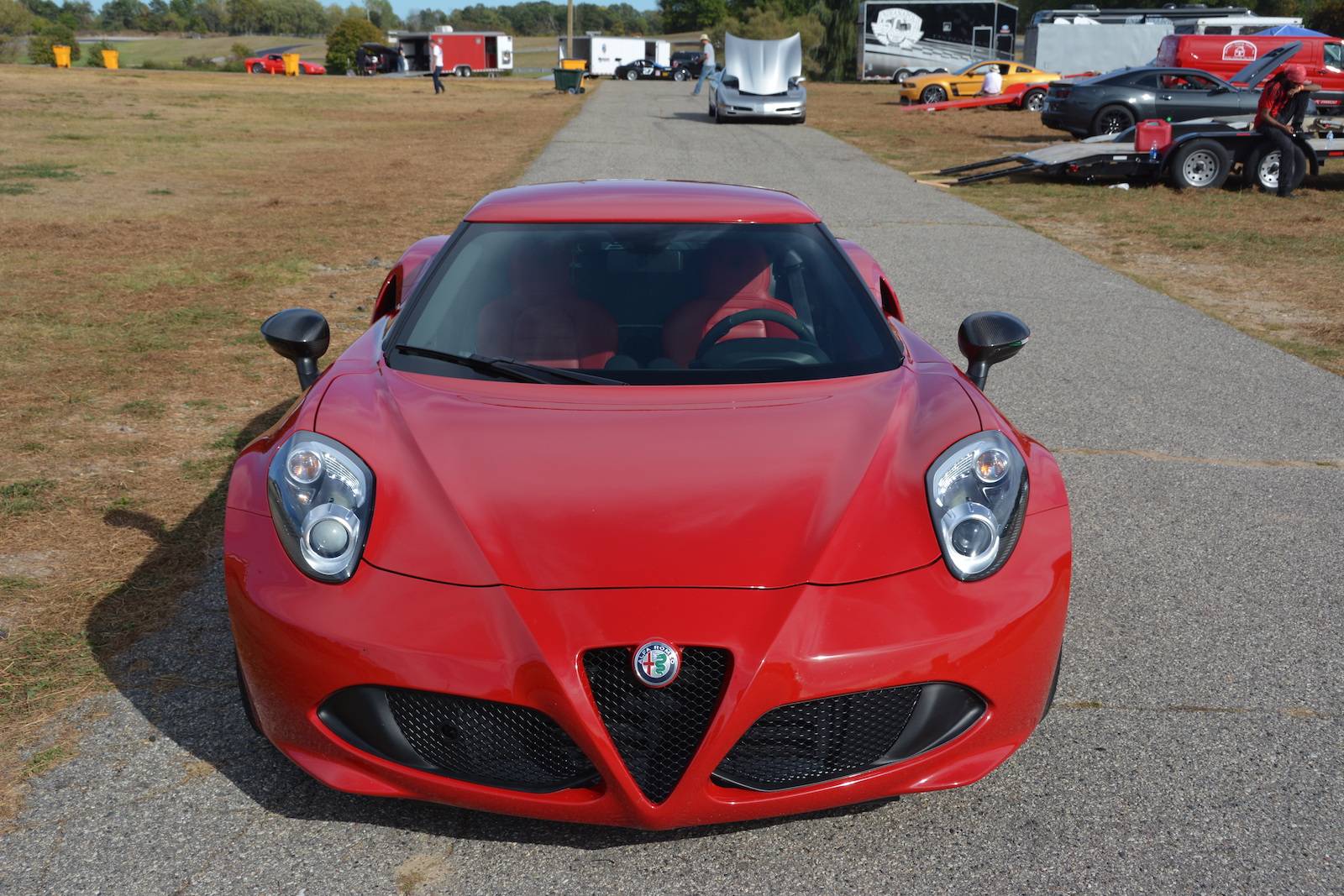
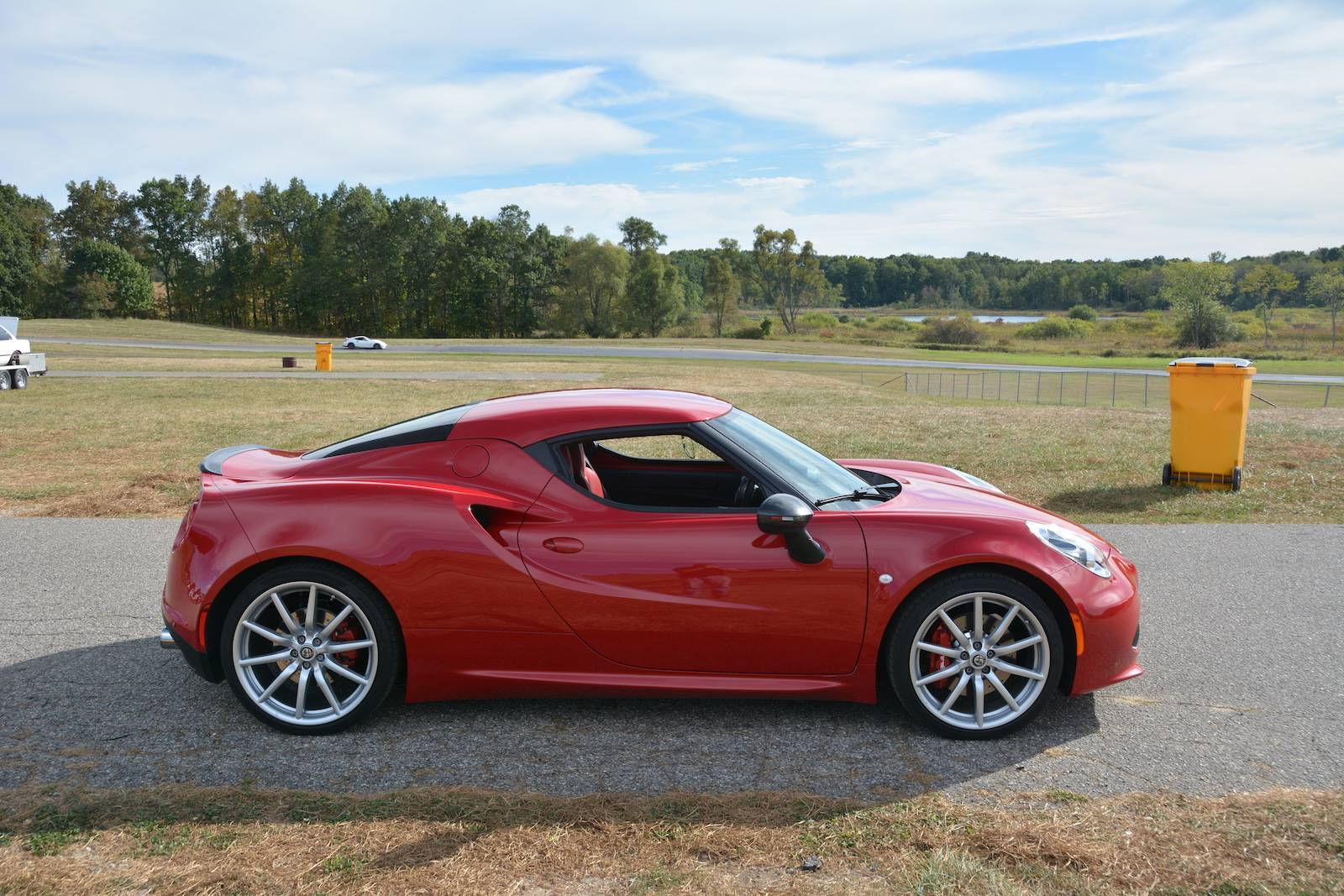

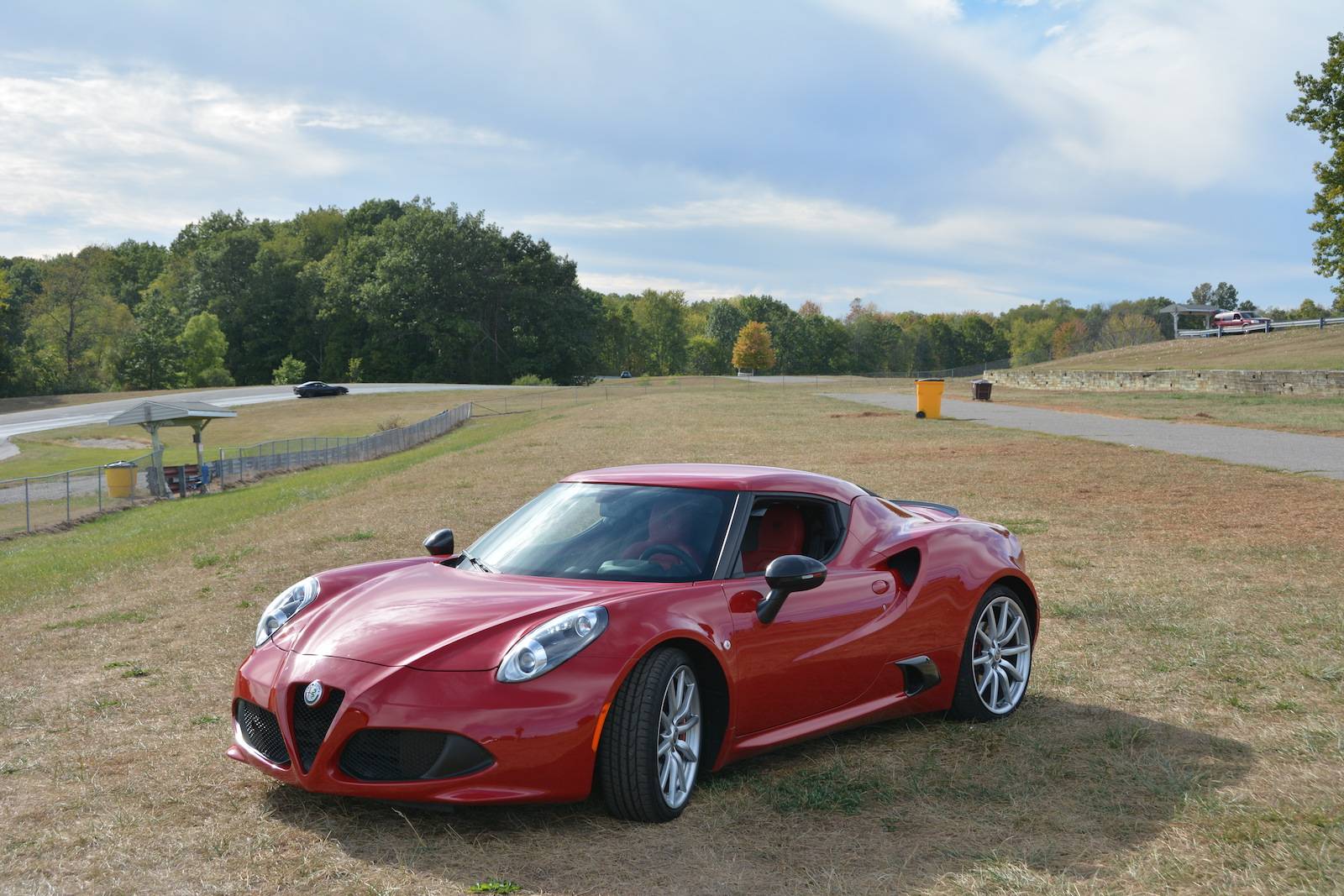
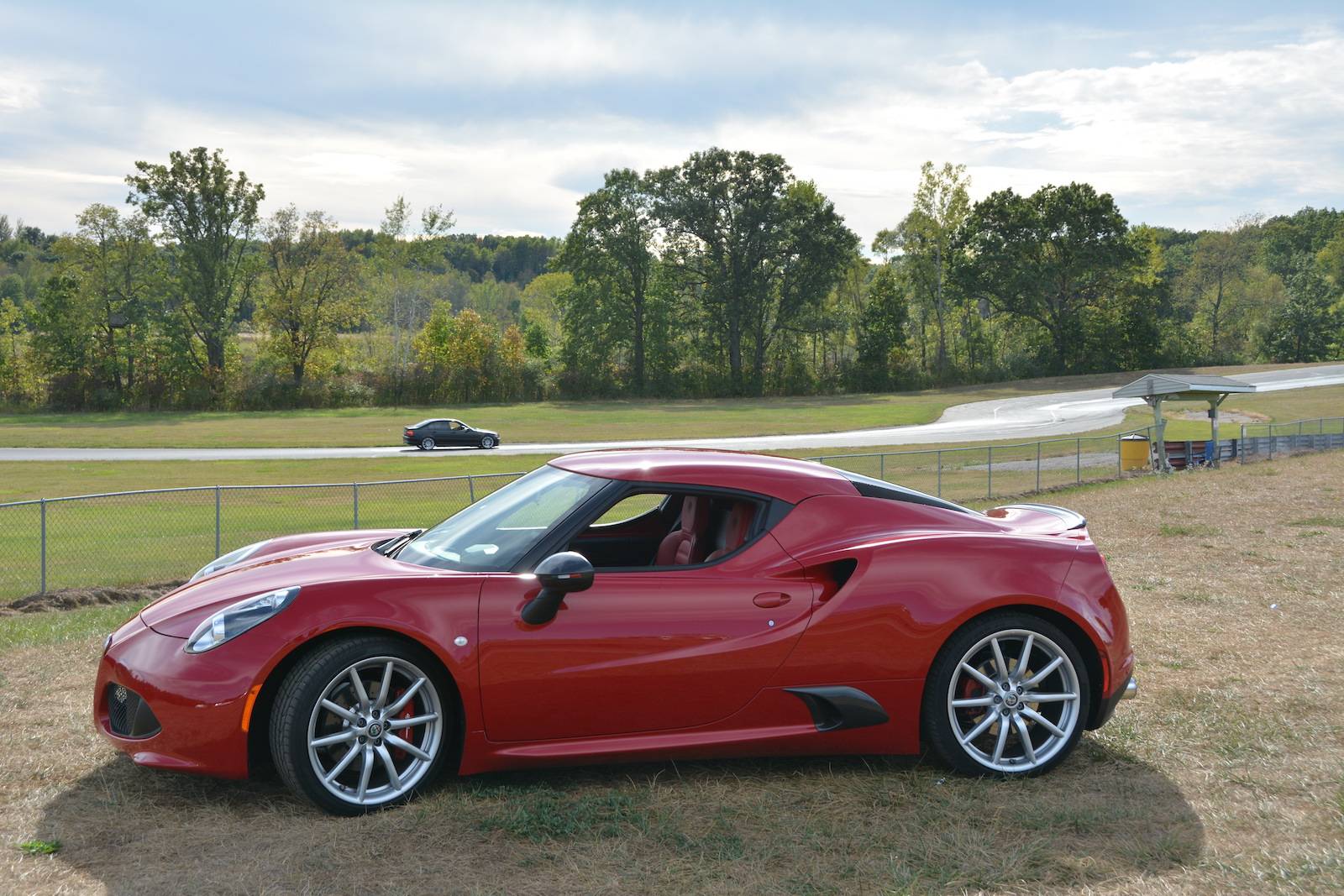

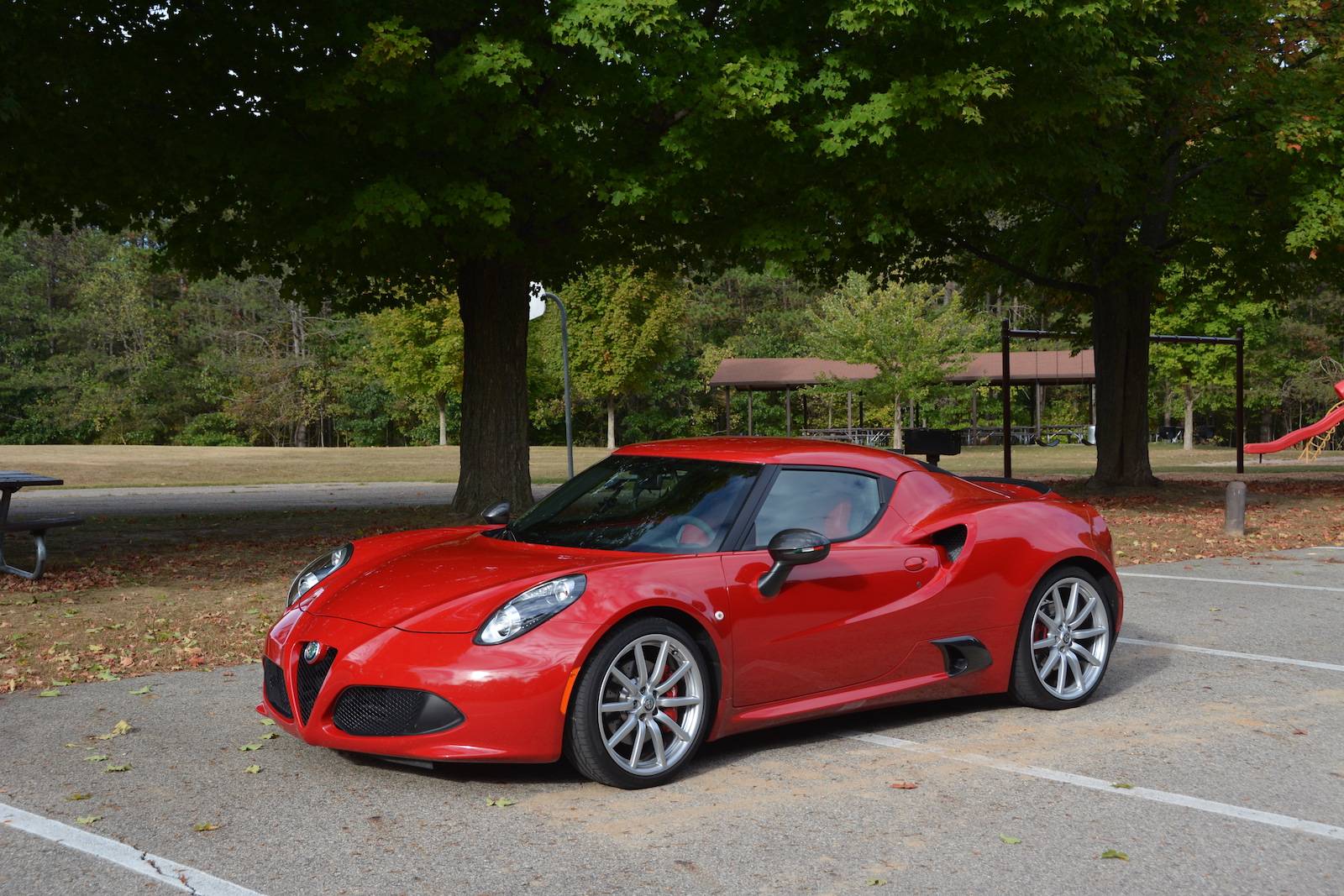
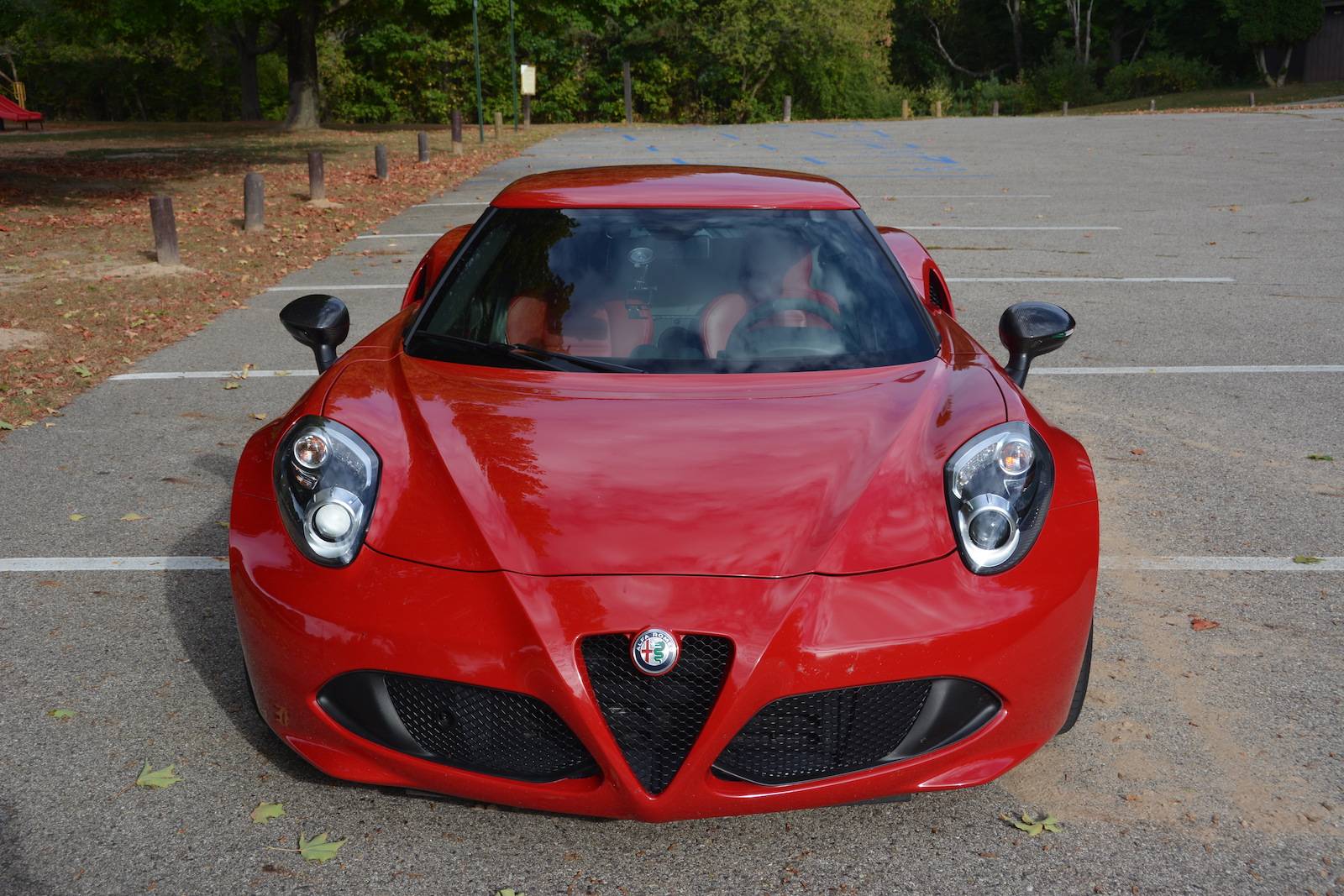
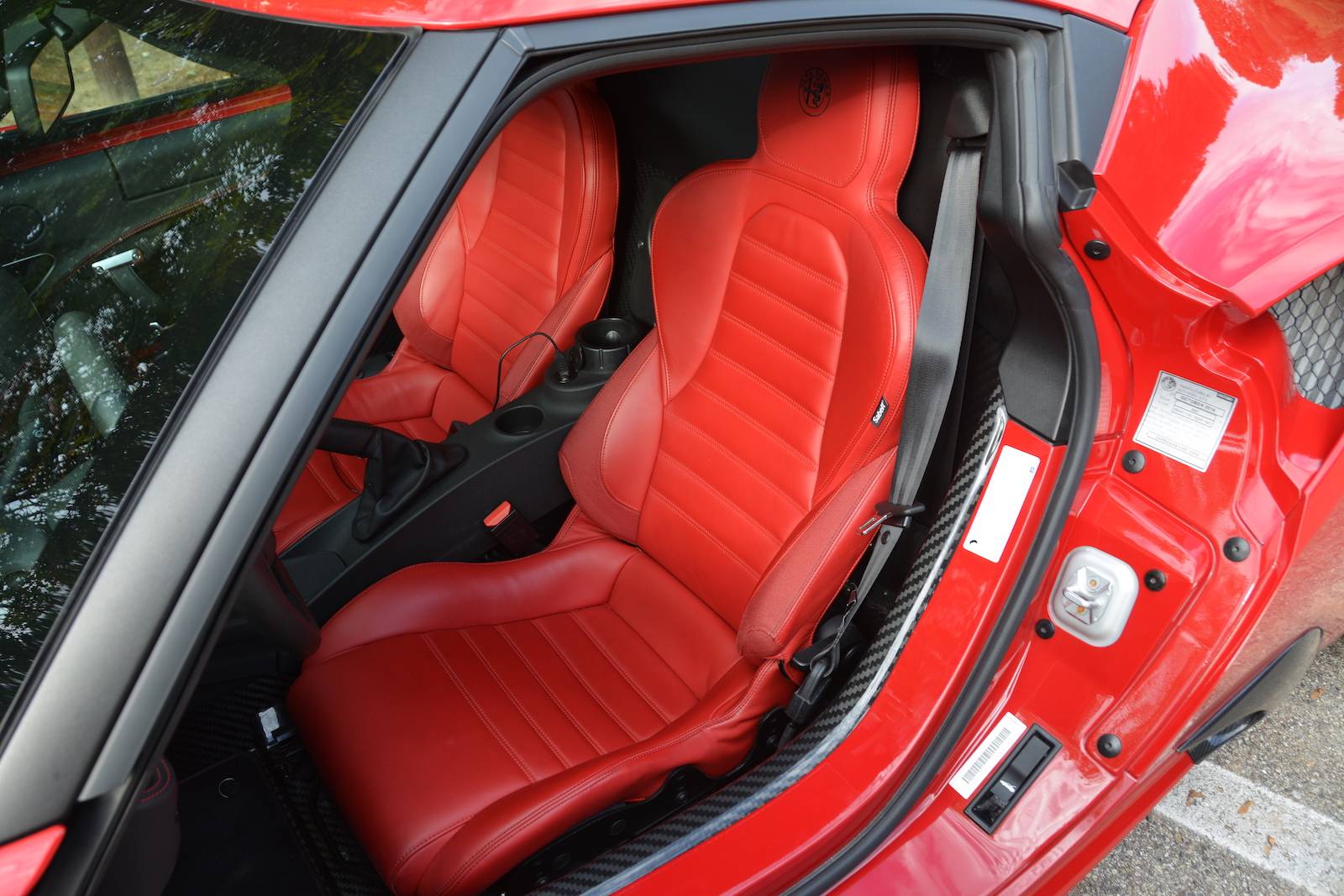

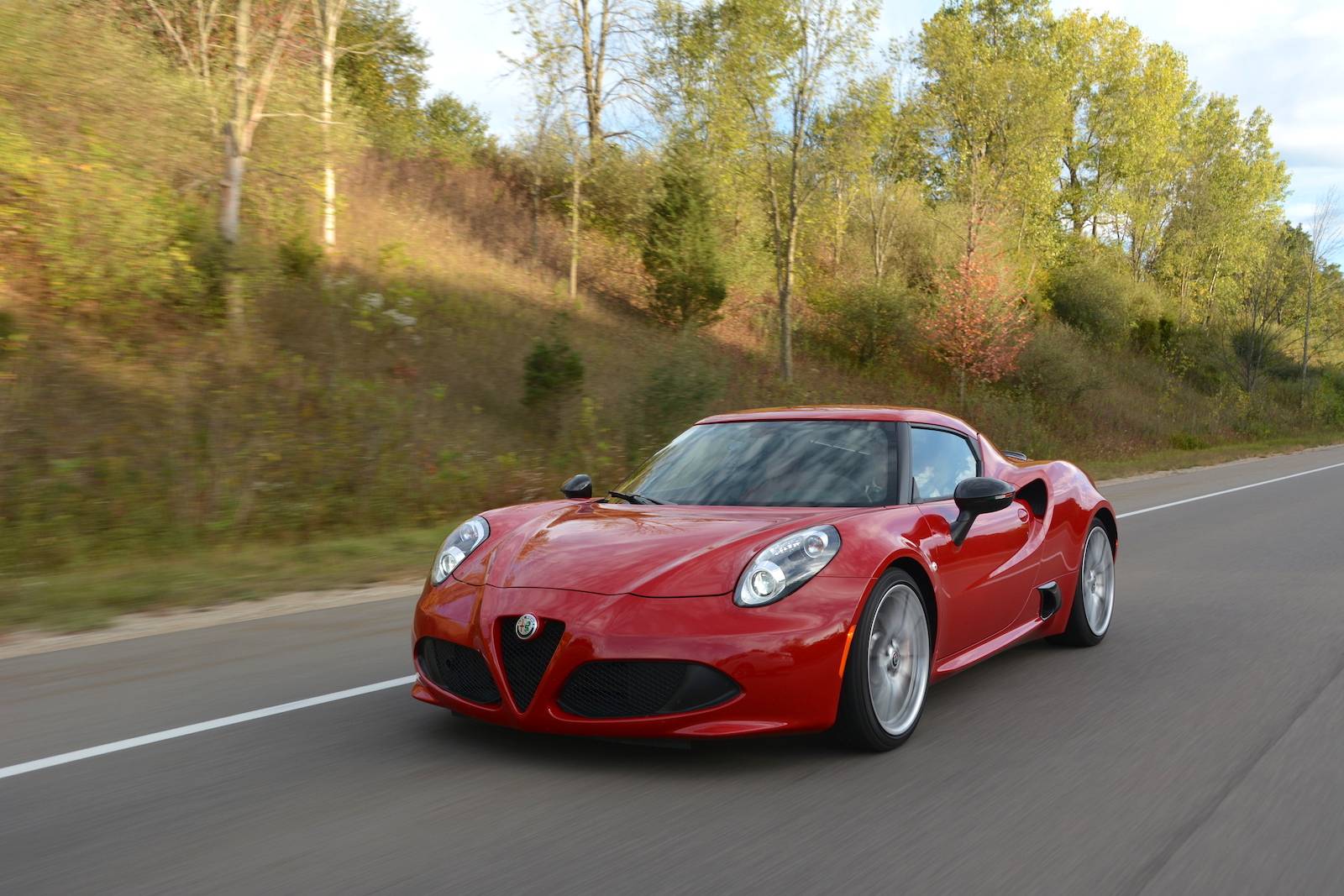
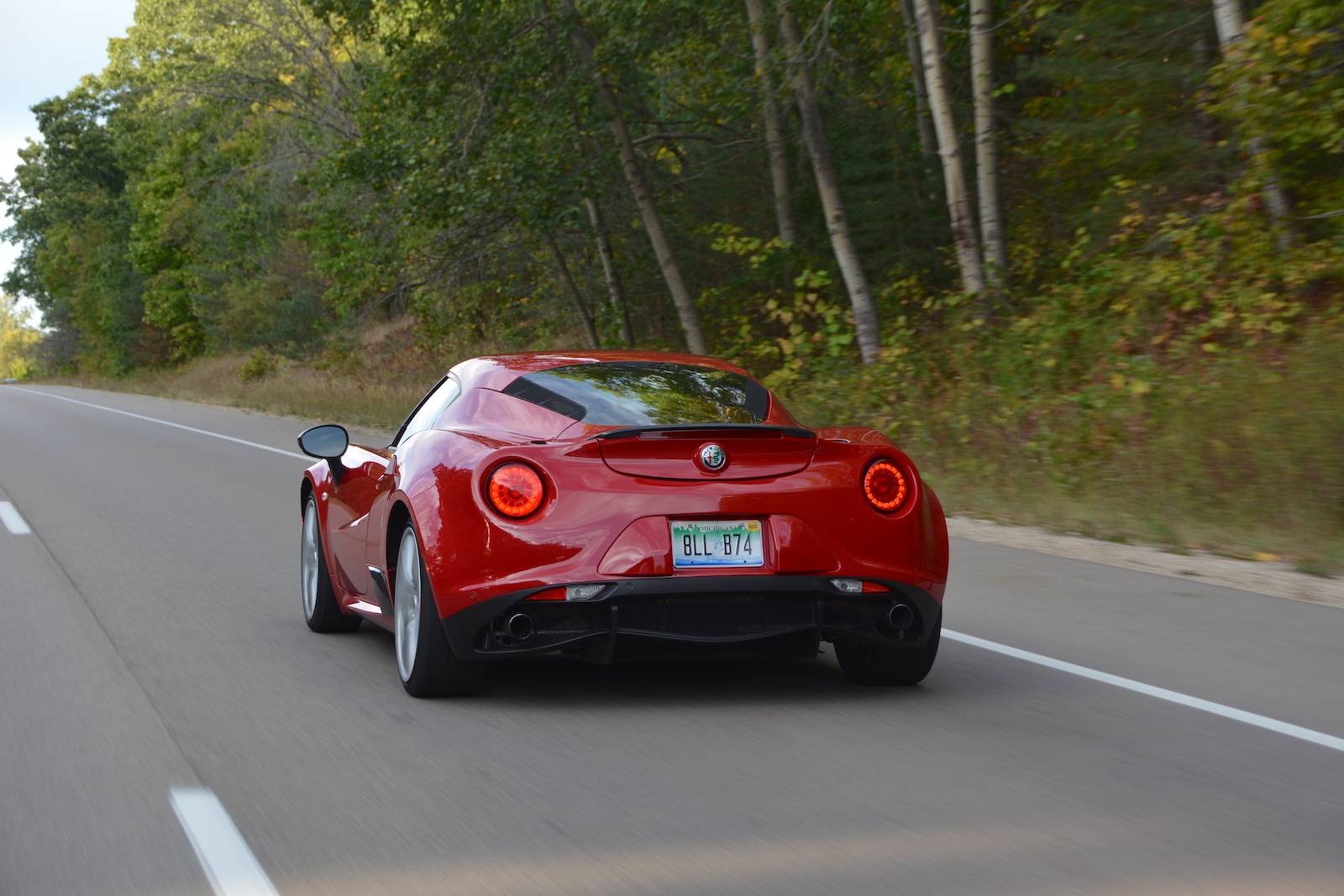



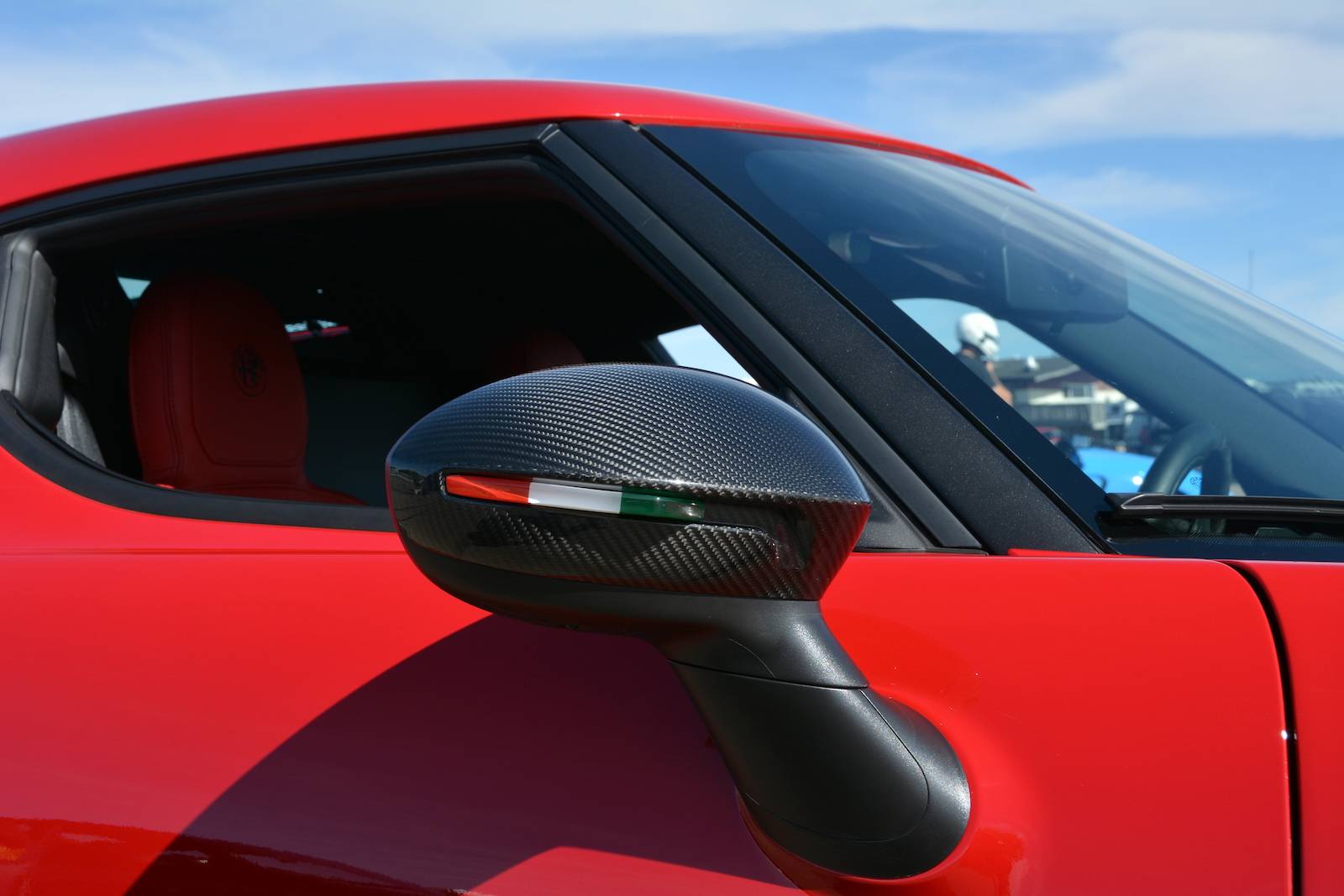
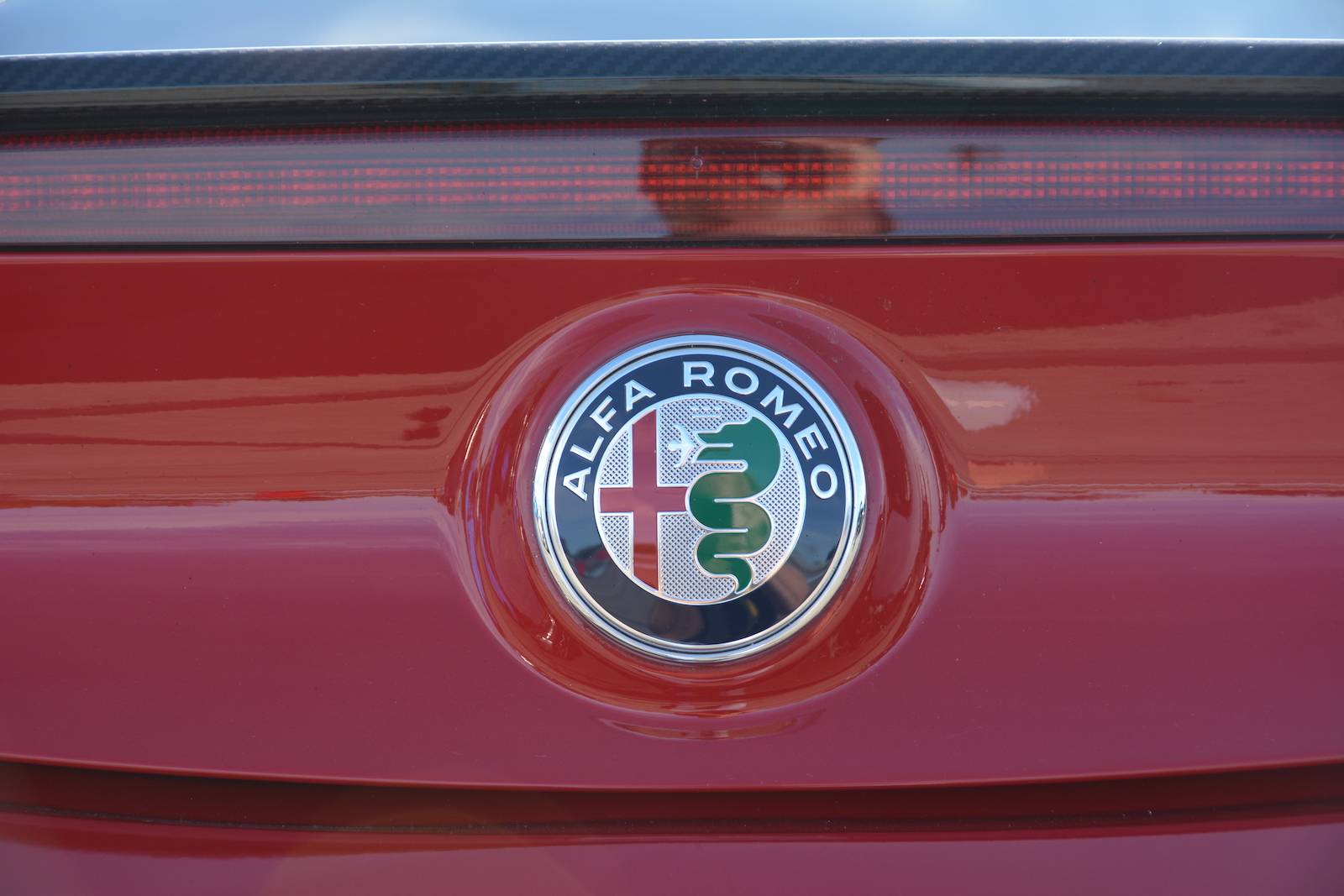
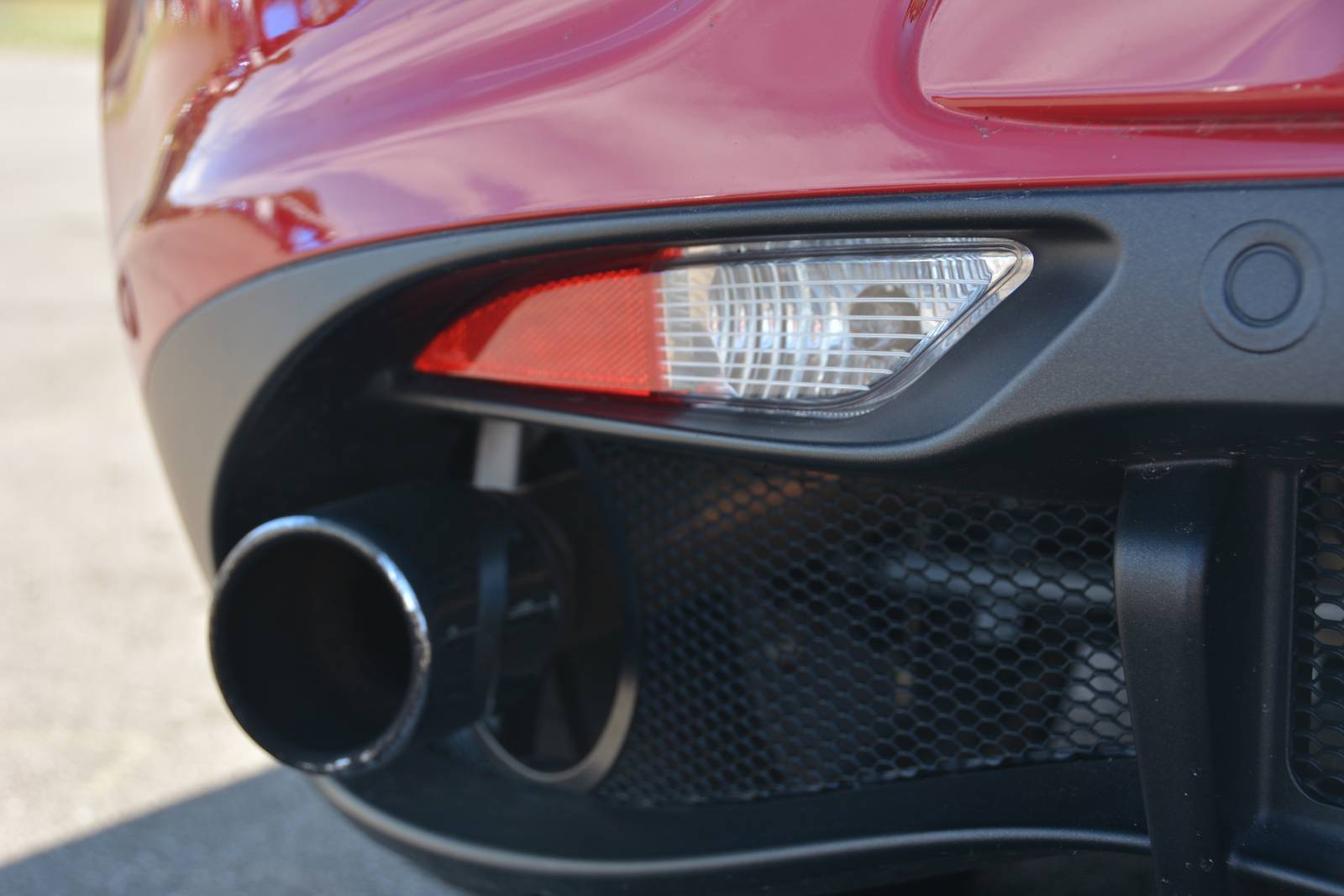

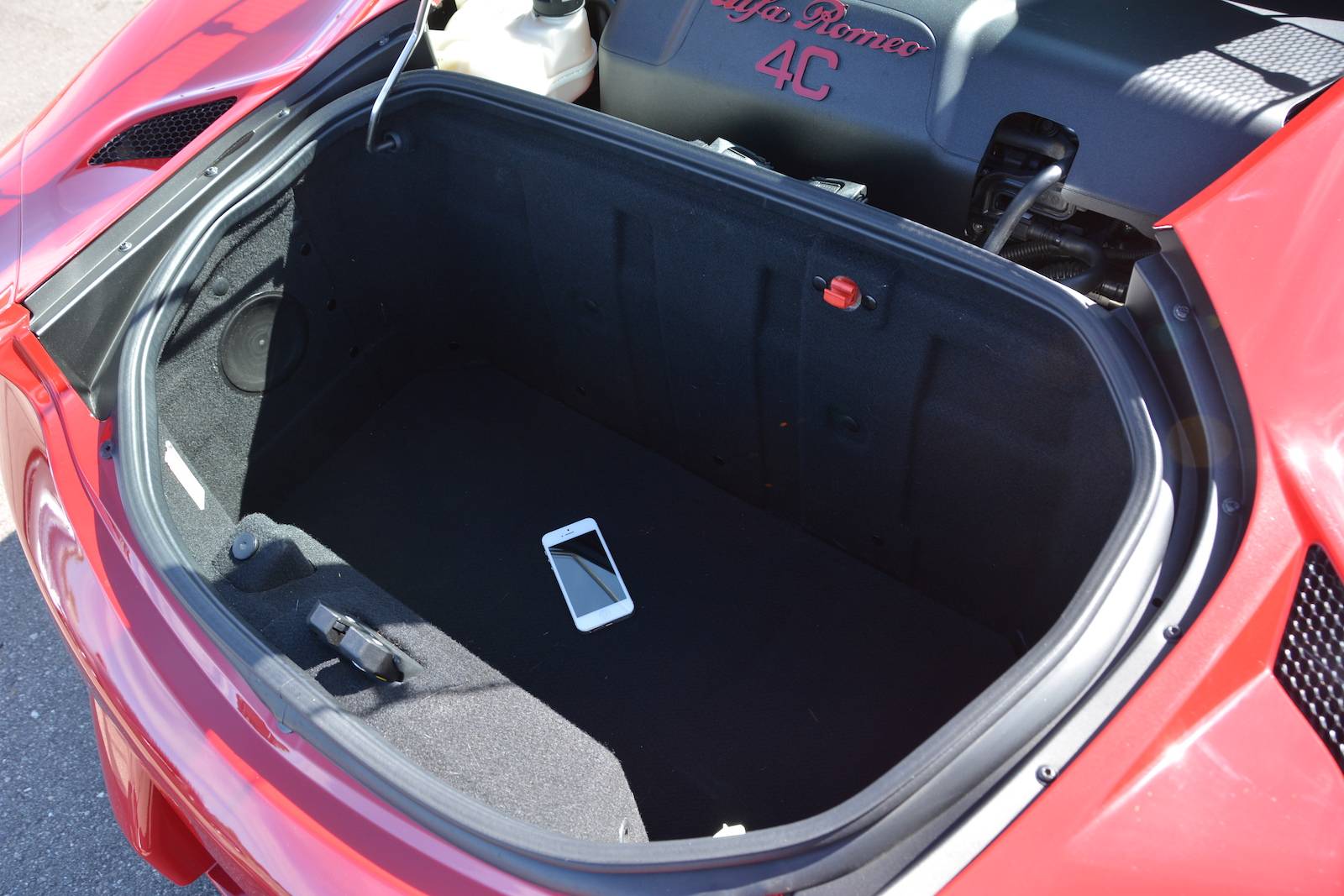
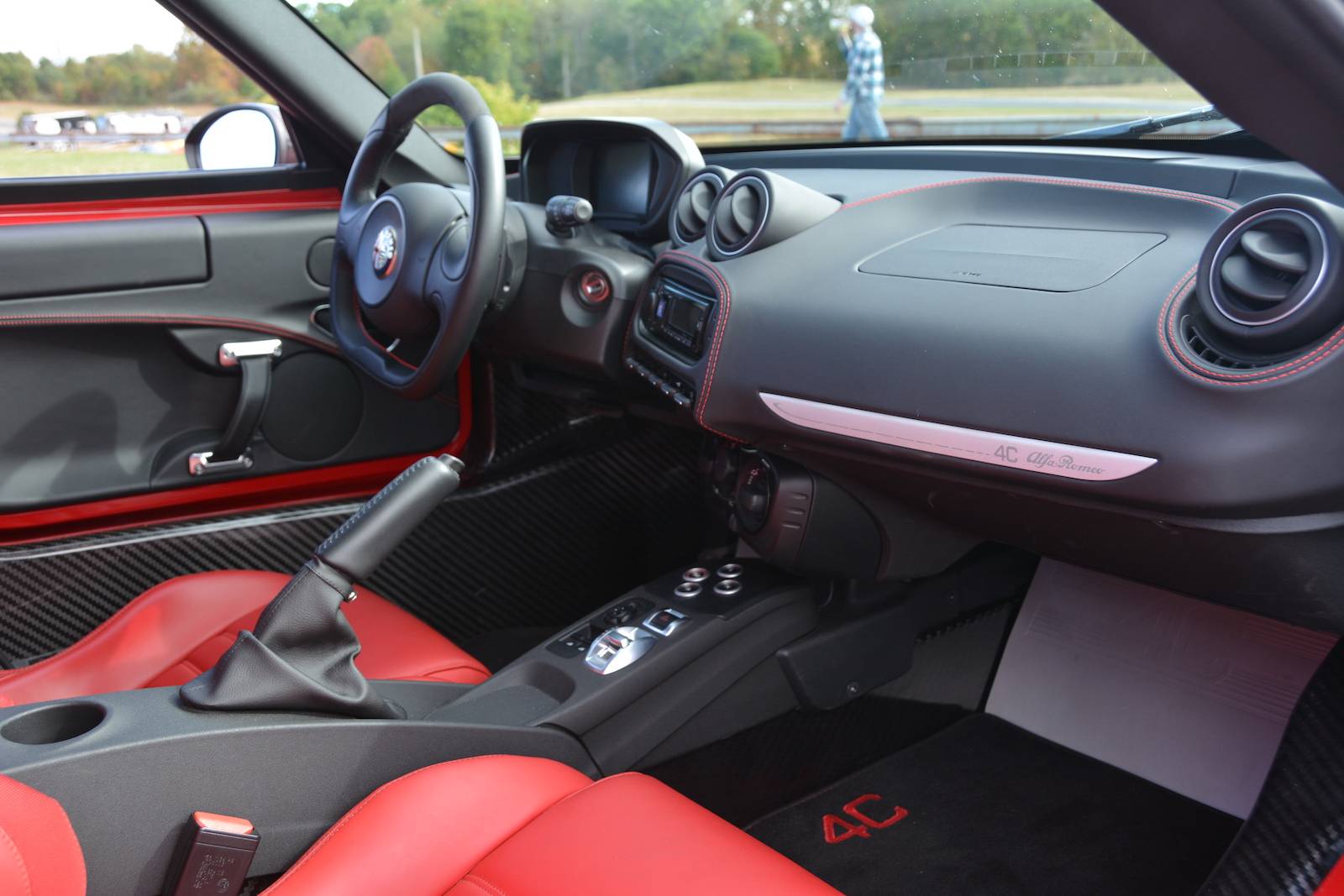
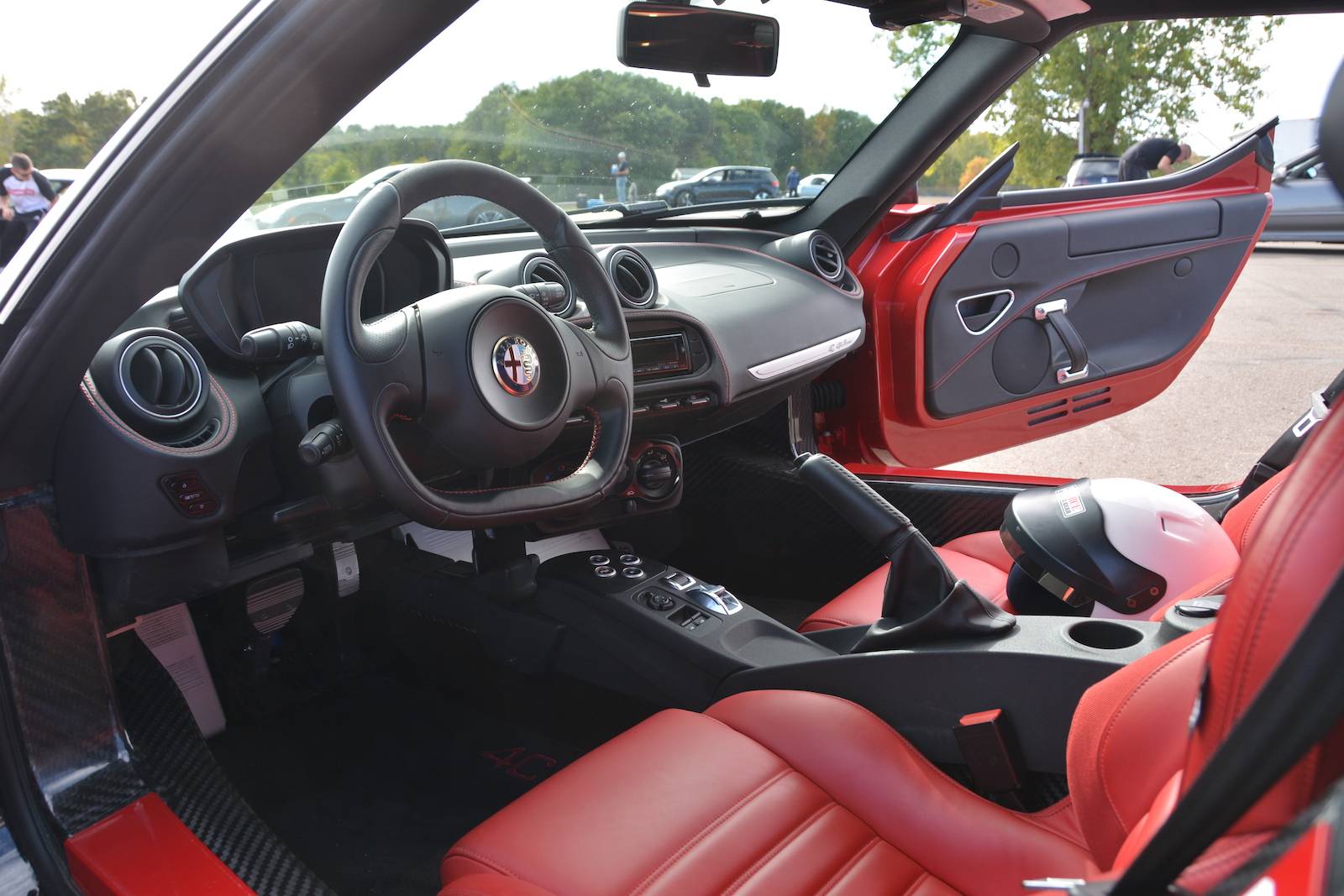
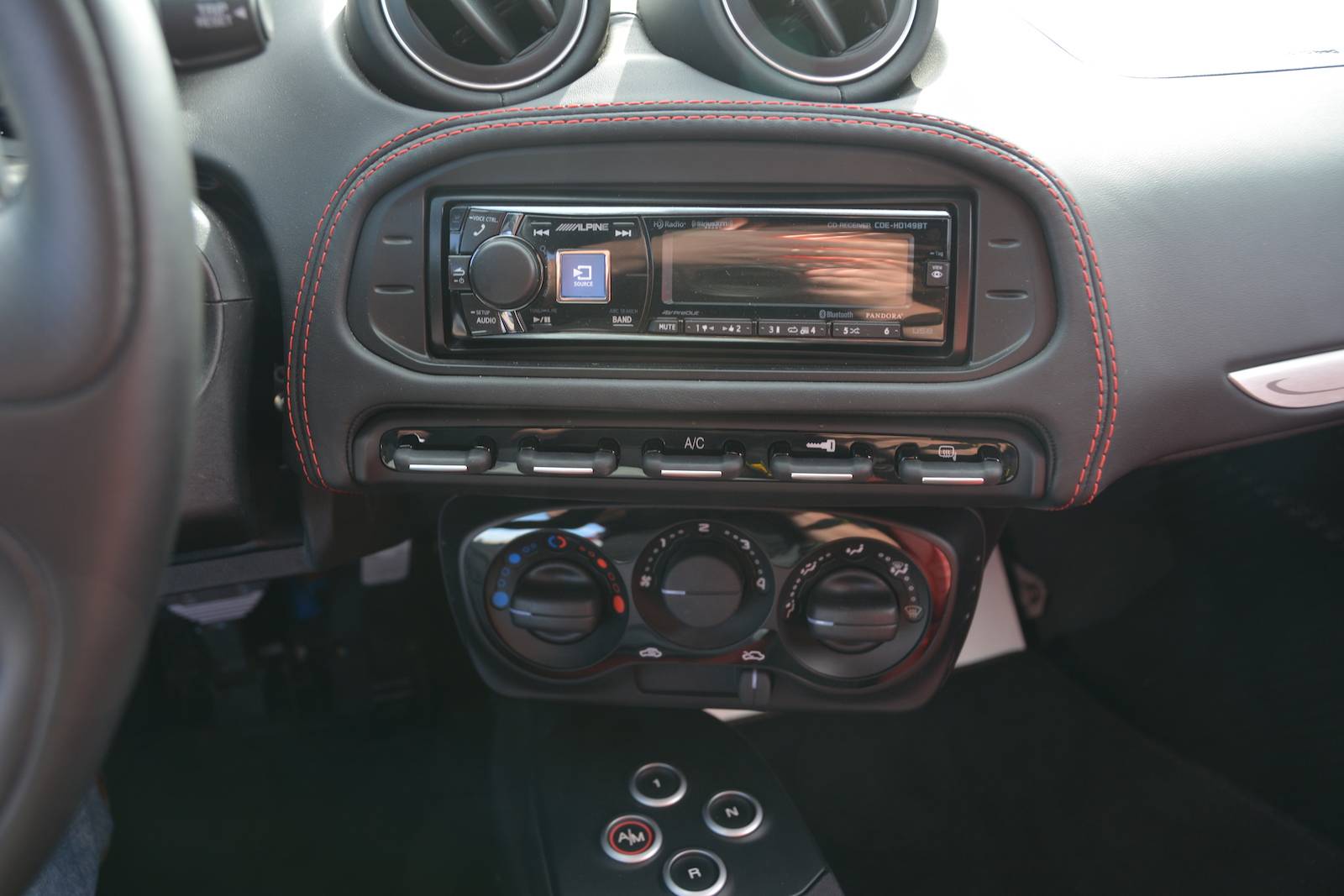
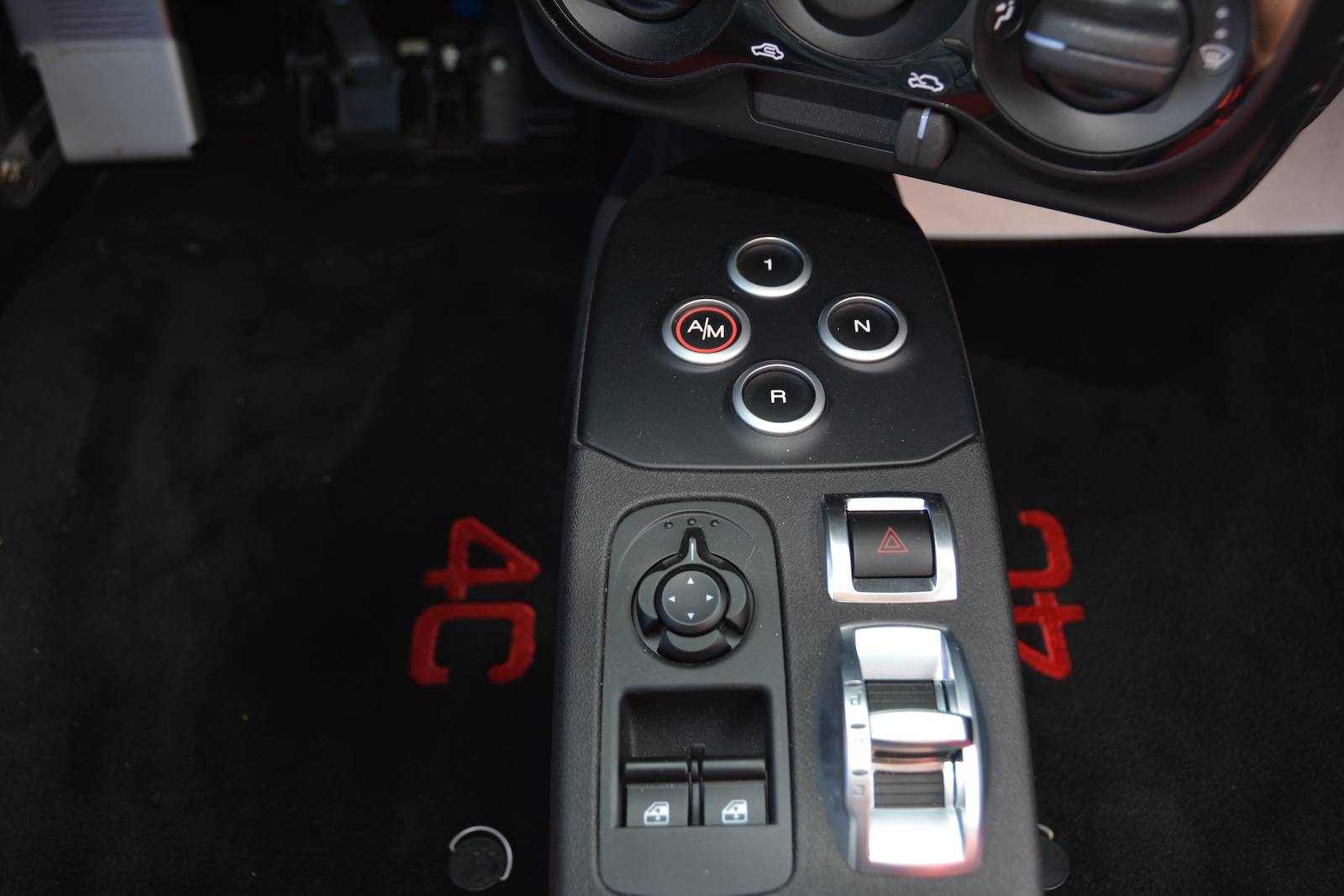

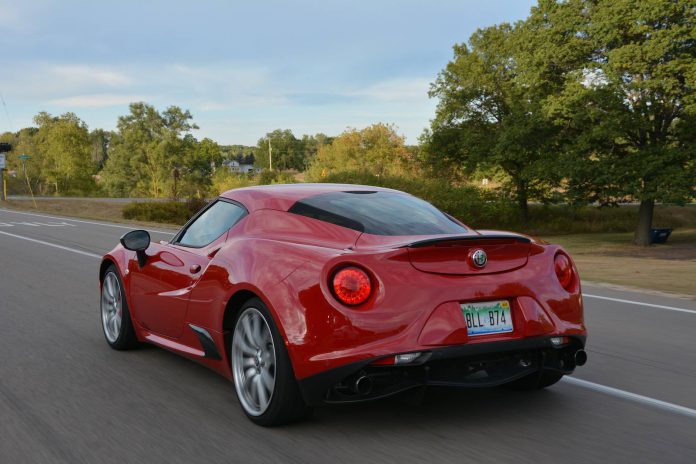
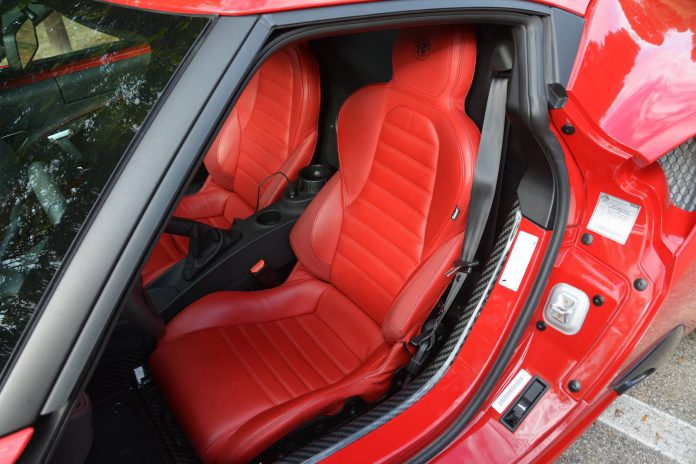

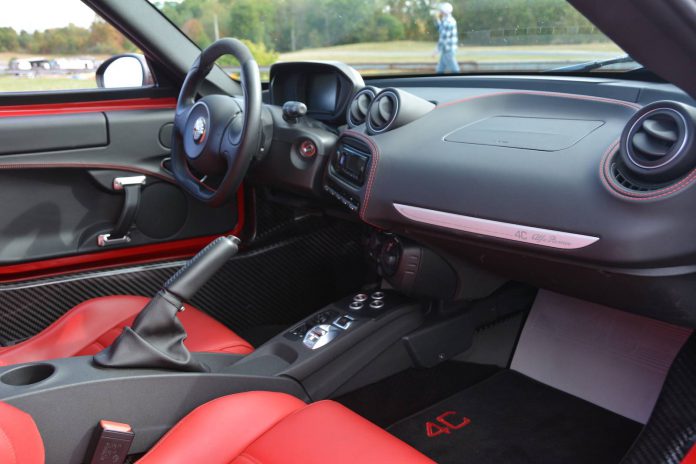













Finally someone who understands this car. Owner for 3 years. Each friggin’ drive is awesome.
Wonderfully written. You appreciate the car for what it was intended to be and capture its essence. My only qualm – there is no big red push button. This car requires nothing more than an old-fashioned key turn to start.
Enzo, you’re absolutely correct. There is no start button – just the switchblade key. Everything I’ve driven this year has a start button and my writing must have gone on auto when I was writing that part. Personally, I like the key better just because its’ different than what everyone else is doing.
Good extensive review from someone who gets it. I’ve had mine for a year now and love it to death ! So much sensory overload. Talk about a driving experience !
I have a 15 coupe, every I drive it on the back roads and canyons, the industrial sound effects sounds like a group B rally car of the 80s. I have to wear gloves because my hands sweat a lot every time I drive this on the back road.
Slot car!!!